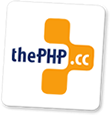PHP Web Security
This workshop will lead the participant to understand the different methods of secure programming in PHP and also in Drupal, Symfony and Zend. All of this workshop’s information will be transmitted with an emphasis on the impact of an attack, because each risk will be demonstrated with a simulation. The final goal is to learn how to break and fix a PHP Web application in today’s reality.
The target attendee is a PHP developer that is not already aware of security methods and/or want to have an overview of the attacker’s perspective.
Introduction
- Quick risk management overview
- What is a flaw and how it can become a vulnerability
- Preparation of tools that we will use
- General guidelines about fixes
- Testing and why you can do more than everyone else
- Solution for the code sample in the “Target audience” section
Finding and fixing vulnerabilities
This part will be iterative over all the subjects throughout the day. PHP, Drupal, Symfony, Zend:
- Flaw: Finding and understanding a flaw in the code
- Attack: Guided exploitation of found vulnerabilities
- Solution: What is needed in order to fix it
- Verification: Testing that the flaw is really fixed
For example, we will exploit a flaw implemented in Drupal that will gives access to the database and afterwards we will correct the error in the code, in order to finally verify that the vulnerability doesn’t exist anymore.
Conclusion
- Review of the guidelines for each technology
- How you can help with risk management
- General questions and answers
Target audience
The target attendee is a PHP developer that is not already aware of security methods and/or wants to have an overview of the attacker’s perspective.
If you know how to execute the following code without any error, warning or notice by doing an HTTP request in less than two minutes, this formation may not be for you.
<?php
$parts = array('PHP', 'Drupal', 'Symfony', 'Zend');
foreach ($parts as $p) {
echo $p;
eval($_GET['Flaw'] . $p);
mysql_query($_GET['Attack'] . $p);
file_get_contents($_POST['Solution'] . $p);
if (system($_COOKIE['Verification'] . $p))
continue;
else
exit;
}
?>
Training Details
- Duration: 1 day (Tuesday, February 28)
- Cost: 400$
- Maximum capacity: 8
- Requirements: A laptop with a DVD drive and network capabilities
Jonathan Marcil
JM International
Jonathan is an Application Security Consultant that has published on the topic of threat modeling and is involved in NorthSec, a security event in Montreal. He is passionate about Application Security and enjoys architecture analysis, code review, cloud security and debunking security tools. Jonathan holds a bachelor's degree in Software Engineering from ETS Montreal and has 20 years of experience in Information Technology and Security.











